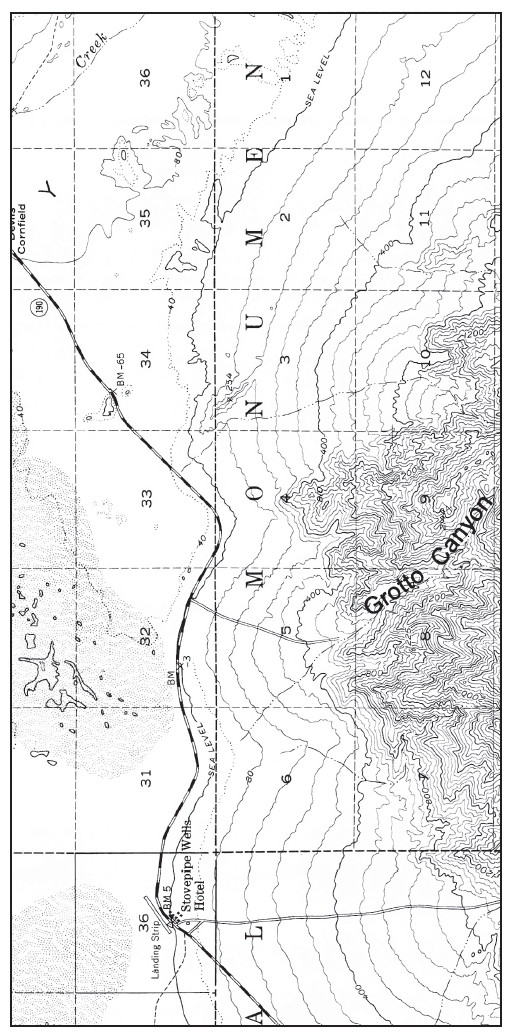Look at the upper portions and margins of the alluvial fans shown on the map and in the stereogram (especially the alluvial fan at the mouth of “Grotto Canyon”). In recent years does it appear that erosion or deposition has been more prominent at the tops of these fans?
The questions on the following page are based on Figure 45-4, a stereogram of the Stovepipe Wells region of Death Valley, California, Figure 45-5, a portion of the “Stovepipe Wells, California” quadrangle (scale 1:62,500; contour interval 80 feet; north is to the left side of the stereogram and topographic map), and Map T-27a, color aerial imagery of this same region of Death Valley. Several large alluvial fans that come out of the Tucki Mountains are coalescing to form a bajada 136°35'17"N, 117°06'35"W).

Figure 45-5: USGS “Stovepipe Wells, California” quadrangle. North is to the left side of the page (scale 1:62,500; contour interval 80 feet, dotted lines represent half-interval contours<--N).
Erosion
You might also like to view...
Why is metal shiny?
A. The electrons absorb each light wave. B. The electrons emit light due to electronic excitation. C. The loose electrons reflect most wavelengths of light. D. The electrons transmit most wavelengths of light. E. all of the above
Allopatric speciation occurs when organisms inherit two different alleles
a. True b. False
How is Earth's magnetic field oriented?
A) almost parallel to the rotation axis B) almost parallel to the equator C) almost perpendicular to the rotation axis D) almost perpendicular to the equator
Density is defined as:
A) layers that are separated. B) the speed at which a liquid moves. C) the weight of a substance. D) the mass per unit of volume.